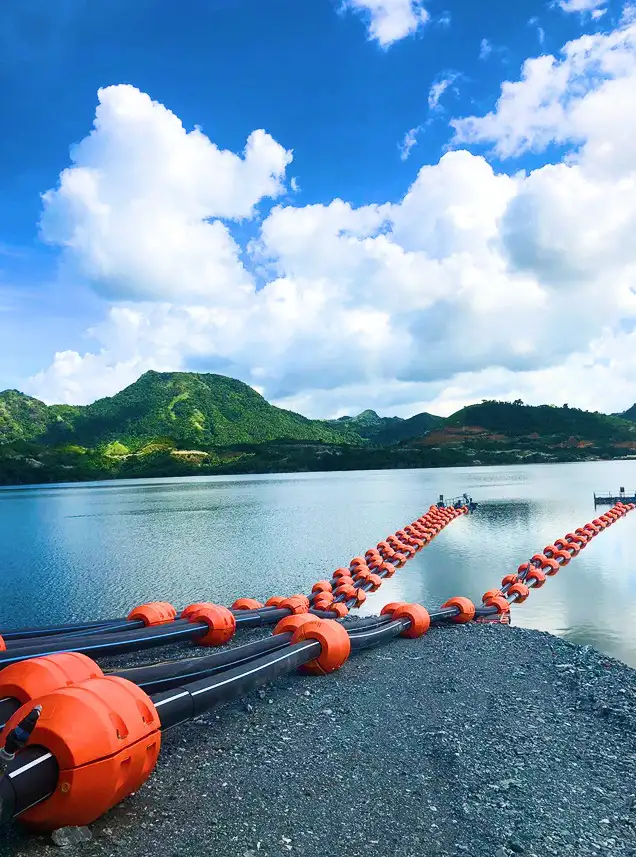
Industrial rubber hoses are fundamental components that demand respect and proper selection. By understanding their basic construction, the different types available, and applying a systematic selection process like STAMPED, industries can ensure operational efficiency, longevity of their equipment, and—most importantly—the safety of their personnel and environment.
Industrial pipe rubber hoses are flexible tubes designed to transfer various materials, including liquids, gases, and even abrasive solids, in demanding industrial environments. They serve as crucial connectors in countless pieces of equipment and systems, offering advantages over rigid piping due to their flexibility, ease of installation, and ability to withstand challenging conditions.
An industrial rubber hose typically consists of three main layers:
Inner Tube: This is the core component that comes into direct contact with the material being conveyed. It's made from a specific type of synthetic rubber (e.g., Nitrile Rubber (NBR), EPDM, PTFE) chosen for its resistance to the fluid, chemical compatibility, and ability to prevent degradation or contamination.
Reinforcement Layers: These layers provide the hose with its strength, pressure rating, and resistance to collapse or bursting. They are usually made from synthetic fibers (like textile braids) or steel wire braids or spirals, depending on the required strength and application.
Outer Cover: The outermost layer acts as a protective shield against abrasion, environmental elements (like UV radiation and ozone), and chemical exposure. It's typically made of durable synthetic rubber or a blend of rubber and other materials like PVC.
Industrial rubber hoses are categorized based on the specific media they are designed to transfer and the conditions they must endure. Some common types include:
Air Hoses: For compressed air, pneumatic tools, and general air transfer.
Water Hoses: For transferring water in various applications, from irrigation to industrial cleaning.
Chemical Hoses: Specifically designed to handle corrosive chemicals, acids, alkalis, and industrial solvents, often made from materials like EPDM, PTFE, or UHMWPE.
Petroleum/Oil Hoses: For transferring fuels, oils, and other petroleum-based products, typically made with NBR (nitrile rubber) for oil resistance.
Steam Hoses: Engineered to withstand high-temperature saturated steam, usually made from EPDM or other heat-resistant rubbers.
Material Handling Hoses: For conveying abrasive materials like sand, gravel, cement, and other dry or wet solids, often constructed with highly abrasion-resistant natural rubber or SBR.
Food and Beverage Hoses: Designed for the sanitary transfer of food-grade liquids and beverages, adhering to strict FDA and USDA standards.
Hydraulic Hoses: Used in high-pressure hydraulic systems to transfer hydraulic fluid, often reinforced with multiple layers of steel wire.
Welding Hoses: Specific hoses for gases used in welding, such as oxygen and acetylene, often color-coded (e.g., green for oxygen, red for burning gas).
Ducting Hoses: Flexible hoses for ventilation, fume extraction, and material conveying (e.g., sawdust, dust, light particles).
The choice of rubber material is critical for the hose's performance:
Natural Rubber (NR): Offers excellent elasticity, flexibility, and abrasion resistance. Suitable for general liquids, air, and some inorganic chemicals, but has poor oil and aging resistance.
Nitrile Butadiene Rubber (NBR): Known for excellent oil, fuel, and grease resistance, as well as good abrasion and temperature resistance. Widely used for petroleum and hydraulic applications.
Ethylene Propylene Diene Monomer (EPDM): Offers excellent resistance to heat, ozone, weathering, hot water, steam, and some acids and alkalis. Commonly used in automotive cooling systems, HVAC, and steam applications.
Styrene Butadiene Rubber (SBR): A general-purpose synthetic rubber with good abrasion resistance, often used for water and air hoses.
Chloroprene (Neoprene): Provides good resistance to oil, chemicals, weathering, and temperature extremes.
Polyurethane (PU): Known for exceptional abrasion resistance, flexibility, and good chemical resistance. Often used for material handling and pneumatic applications.
Silicone: Offers outstanding temperature tolerance (both high and low), good flexibility, and resistance to various fluids, often used in high-performance automotive and chemical processing.
Polytetrafluoroethylene (PTFE): Provides exceptional chemical resistance, a smooth non-stick surface, and resistance to high temperatures. Used for highly corrosive chemicals and high-purity applications.
Industrial pipe rubber hoses are indispensable across a vast array of industries:
Manufacturing: Transfer of coolants, oils, air, and various process fluids.
Automotive: Fuel lines, radiator hoses, brake lines, and air conditioning systems.
Construction & Mining: Transfer of water, mud, concrete, and abrasive materials.
Agriculture: Irrigation, transfer of fertilizers and pesticides, and water supply.
Chemical Processing: Safe transfer of corrosive chemicals, acids, and solvents.
Oil & Gas: Transfer of crude oil, refined fuels, and other hydrocarbons.
Food & Beverage: Hygienic transfer of food products, beverages, and cleaning solutions.
Marine & Aviation: Various fluid transfer applications in demanding environments.
Choosing the wrong hose can lead to system failure, costly downtime, and serious safety hazards. The industry-standard STAMPED acronym is the best way to ensure you select the correct hose assembly.
S - Size: What are the Inner Diameter (ID), Outer Diameter (OD), and required Length?
T - Temperature: What is the temperature of the media being conveyed and the external environment?
A - Application: What is the hose being used for? (e.g., suction, discharge, hydraulics, washdown).
M - Media: What specific substance will be flowing through the hose? This determines the inner tube material.
P - Pressure: What is the system's maximum working pressure, including any surges? The hose must be rated to handle it.
E - Ends (or Couplings): What type of fittings are needed to connect the hose to your system? (e.g., camlock, threaded, flanged).
D - Delivery (or other considerations): Are there special requirements like color, weight, flexibility, or specific industry standards (FDA, USCG)?
In summary, industrial pipe rubber hoses are vital components in modern industry, engineered with specific materials and constructions to safely and efficiently transport a wide range of substances under diverse and often challenging conditions. Their flexibility, durability, and specialized properties make them essential for the smooth operation of countless industrial processes.
